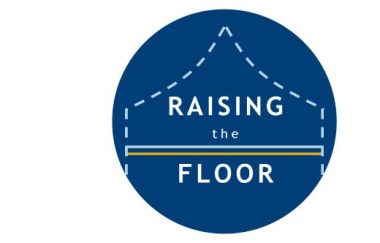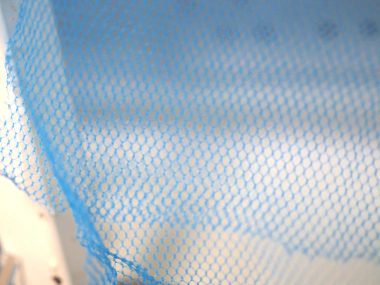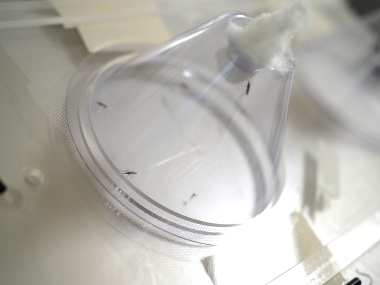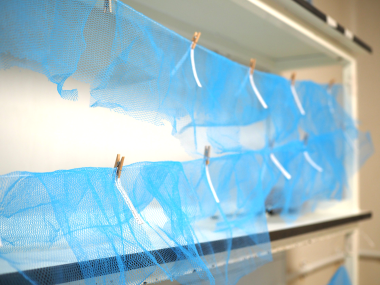Raising the Floor
The Raising the Floor initiative was established in 2022 and is a multisectoral partnership set up by I2I and CHAI to map the key drivers of ITN performance across net lifespan and systematically resolve challenges affecting ITN performance.
Our Vision is to create a system that incentivises continuous innovation of high quality, higher performing ITNs.
A Convening on Raising the Floor on Nets was held in Liverpool in 2022, and brought together partners from across the vector control spectrum to discuss the quality and performance of ITNs.

Problem Statement
Insecticide Treated Nets (ITNs) have been the cornerstone of global malaria prevention efforts for the past two decades. ITNs are an incredibly cost-effective intervention to prevent malaria, and they have been credited with preventing an estimated 2 billion malaria cases and 11.7 million deaths [1]. However, the quality and performance of ITNs have come under increased scrutiny in recent years, with reports indicating that they are not routinely lasting the expected three years in the field [2,3]. Potential causes for shortfalls in ITN performance are multifaceted, ranging from underlying specifications, procurement policies, and environmental conditions within the lifespan of the net post distribution.
Raising the Floor is a multisectoral partnership set up by I2I and The Clinton Health Access Initiative (CHAI) in 2022 to map out and resolve key issues affecting ITN performance across the net lifespan.

Objectives
The overall goal of Raising the Floor is to save more lives through better access to high quality and high performing nets. To achieve this, Raising the Floor works to advance the following objectives and bodies of work:
- Stimulate Innovation: Incentivize improvements to ITN quality and performance
- Maximize Performance: Use lifecycle data to improve performance
- Ensure Quality: Keep products consistently in specification
- Build Trust & Use Data: Develop mechanisms to communicate information more openly and effectively

Current Priorities
Priorities for 2024 include:
- Improve post-market data collection (PMDC): there is a need to streamline the guidance, measurement, and implementation of the physical durability, bioefficacy, and use of nets to better inform decision making. Activities are advanced through a working group and with input from representatives across industry, country programs, procurement, normative bodies, research, and country support partners. These activities include:
-
- Develop guidelines to support country programs with selecting appropriate indicators, methodology, and resolution of post-distribution ITN data.
-
- Alignment with WHO PQ on PMDC guidelines.
2. Publish a glossary: Support the PQ team with publishing a glossary of terms and definitions associated with ITN quality and effectiveness.
3. Incorporate physical durability indicator into procurement decisions: The Nonwovens Innovative Research Institute (NIRI) has collaborated with ITN researchers to develop a performance metric for resistance to damage to ITNs. Raising the Floor will work with NIRI and procurement partners to ensure physical durability metrics are considered during net selection, in turn incentivising improvements in ITN physical durability.
4. Data sharing: There is a need to build trust between partners and sectors through sharing and using data, including identifying and developing mechanisms to communicate and interpret information more effectively.
-
- Sharing and interpretation of post market data: To strengthen existing online platforms that host and display durability data in order to increase the transparency and awareness of all durability data collected.
5. Complete a detailed cost effectiveness analysis for investing in longer-lasting nets: Identifying costs and increased potential lifespan/durability associated with changes/updates to ITNs and incorporate this analysis into an incentives report for procurers.

Raising the Floor Team
Angus Spiers, Director, Innovation to Impact
Tara Seethaler, Associate Director, Malaria Vector Control, Clinton Health Access Initiative
Rosemary Lees, Methods Validation Lead, Innovation to Impact
Anna Trett, Senior Associate, Malaria Vector Control, Clinton Health Access Initiative
Caroline Barwa, Technical Programme Manager, Innovation to Impact





